
Muskeg is a peat-forming ecosystem found in several northern climates, most commonly in Arctic and boreal areas. Muskeg is approximately synonymous with bog or peatland, and is a standard term in Western Canada and Alaska. The term became common in these areas because it is of Cree origin; maskek (ᒪᐢᑫᐠ) meaning "low-lying marsh".

Peat is an accumulation of partially decayed vegetation or organic matter. It is unique to natural areas called peatlands, bogs, mires, moors, or muskegs. The peatland ecosystem covers 3.7 million square kilometres (1.4 million square miles) and is the most efficient carbon sink on the planet, because peatland plants capture carbon dioxide (CO2) naturally released from the peat, maintaining an equilibrium. In natural peatlands, the "annual rate of biomass production is greater than the rate of decomposition", but it takes "thousands of years for peatlands to develop the deposits of 1.5 to 2.3 m [4.9 to 7.5 ft], which is the average depth of the boreal [northern] peatlands", which store around 415 gigatonnes (Gt) of carbon (about 46 times 2019 global CO2 emissions). Globally, peat stores up to 550 Gt of carbon, 42% of all soil carbon, which exceeds the carbon stored in all other vegetation types, including the world's forests, although it covers just 3% of the land's surface. Sphagnum moss, also called peat moss, is one of the most common components in peat, although many other plants can contribute. The biological features of sphagnum mosses act to create a habitat aiding peat formation, a phenomenon termed 'habitat manipulation'. Soils consisting primarily of peat are known as histosols. Peat forms in wetland conditions, where flooding or stagnant water obstructs the flow of oxygen from the atmosphere, slowing the rate of decomposition. Peat properties such as organic matter content and saturated hydraulic conductivity can exhibit high spatial heterogeneity.

A bog body is a human cadaver that has been naturally mummified in a peat bog. Such bodies, sometimes known as bog people, are both geographically and chronologically widespread, having been dated to between 8000 BCE and the Second World War. The unifying factor of the bog bodies is that they have been found in peat and are partially preserved; however, the actual levels of preservation vary widely from perfectly preserved to mere skeletons.
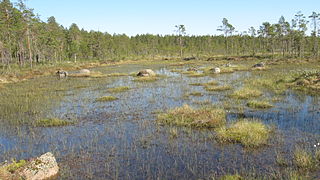
A bog or bogland is a wetland that accumulates peat as a deposit of dead plant materials – often mosses, typically sphagnum moss. It is one of the four main types of wetlands. Other names for bogs include mire, mosses, quagmire, and muskeg; alkaline mires are called fens. A baygall is another type of bog found in the forest of the Gulf Coast states in the United States. They are often covered in heath or heather shrubs rooted in the sphagnum moss and peat. The gradual accumulation of decayed plant material in a bog functions as a carbon sink.

Askham Bog is small area of peat bog and Site of Special Scientific Interest situated within the Vale of York in North Yorkshire, England. It lies to the south-west of York, north of Copmanthorpe and near Askham Richard and Askham Bryan. It is regarded as one of the most ecologically diverse sites in Northern England.

The Sweet Track is an ancient trackway, or causeway, in the Somerset Levels, England, named after its finder, Ray Sweet. It was built in 3807 BC and is the second-oldest timber trackway discovered in the British Isles, dating to the Neolithic. It is now known that the Sweet Track was predominantly built along the course of an earlier structure, the Post Track.

Old Croghan Man is a well-preserved Irish Iron Age bog body found in June 2003. The remains are named after Croghan Hill, north of Daingean, County Offaly, near where the body was found. The find is on display in the National Museum of Ireland in Dublin. Old Croghan Man was found three months after a similar find, dubbed Clonycavan Man, in County Meath.
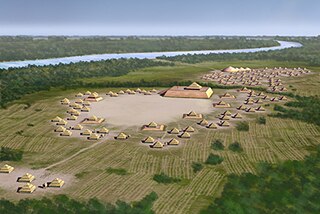
Spiro Mounds is an archaeological site located in present-day eastern Oklahoma that remains from an indigenous Indian culture that was part of the major northern Caddoan Mississippian culture. The 80-acre site is located within a floodplain on the southern side of the Arkansas River. The modern town of Spiro developed approximately seven miles to the south.

Key Marco was an archaeological site (8CR48) consisting of a large shell works island next to Marco Island, Florida. A small pond on Key Marco, now known as the "Court of the Pile Dwellers" (8CR49), was excavated in 1896 by the Smithsonian Institution's Pepper-Hearst Expedition, led by Frank Hamilton Cushing. Cushing recovered more than 1,000 wooden artifacts from the pond, the largest number of wooden artifacts from any prehistoric archaeological site in the eastern United States. These artifacts are described as some of the finest prehistoric Native American art in North America. The Key Marco materials are principally divided between the University of Pennsylvania Museum of Archaeology and Anthropology, University of Pennsylvania; the Department of Anthropology, National Museum of Natural History, Smithsonian Institution; and the Florida Museum of Natural History, University of Florida. The original pond was completely excavated and refilled. It is now covered by a housing subdivision. Excavations of small parts of the site were also conducted in 1965 and 1995.
Bog-wood, also known as abonos and, especially amongst pipe smokers, as morta, is a material from trees that have been buried in peat bogs and preserved from decay by the acidic and anaerobic bog conditions, sometimes for hundreds or even thousands of years. The wood is usually stained brown by tannins dissolved in the acidic water. Bog-wood represents the early stages in the fossilisation of wood, with further stages ultimately forming jet, lignite and coal over a period of many millions of years. Bog-wood may come from any tree species naturally growing near or in bogs, including oak, pine (Pinus), yew (Taxus), swamp cypress (Taxodium) and kauri (Agathis). Bog-wood is often removed from fields and placed in clearance cairns. It is a rare form of timber that is claimed to be "comparable to some of the world's most expensive tropical hardwoods".
Croghan Hill is a hill with a height of 234 metres (768 ft) in County Offaly, Ireland. The remains of an extinct volcano, it rises from the Bog of Allen and dominates the surrounding plains. Historically known as Brí Éile, it is mentioned in Irish mythology and is traditionally seen as a sacred hill. On the summit is an ancient pagan burial mound with panoramic views, which reputedly became the inauguration site of the kings of Uí Failghe. On the eastern slope is an old graveyard and the remains of a medieval church, while at the western foot of the hill is the remains of a medieval settlement, church and castle. An ancient bog body, Old Croghan Man, was found nearby. The village of Croghan is at the southern foot of the hill.

In archaeology, a biofact is any organic material including flora or fauna material found at an archaeological site that has not been technologically altered by humans yet still has cultural relevance. Biofacts can include but are not limited to plants, seeds, pollen, animal bones, insects, fish bones and mollusks. The study of biofacts, alongside other archaeological remains such as artifacts are a key element to understanding how past societies interacted with their surrounding environment and with each other. Biofacts also play a role in helping archaeologists understand questions of subsistence and reveals information about the domestication of certain plant species and animals which demonstrates, for example, the transition from a hunter-gatherer society to a farming society.
Calceology is the study of footwear, especially historical footwear whether as archaeology, shoe fashion history, or otherwise. It is not yet formally recognized as a field of research. Calceology comprises the examination, registration, research and conservation of leather shoe fragments. A wider definition includes the general study of the ancient footwear, its social and cultural history, technical aspects of pre-industrial shoemaking and associated leather trades, as well as reconstruction of archaeological footwear.
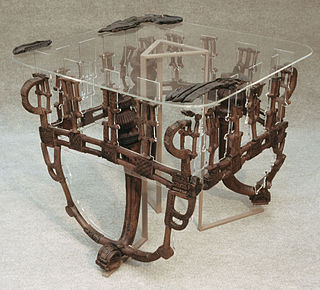
A spectacular collection of furniture and wooden artifacts was excavated by the University of Pennsylvania at the site of Gordion, the capital of the ancient kingdom of Phrygia in the early first millennium BC. The best preserved of these works came from three royal burials, surviving nearly intact due to the relatively stable conditions that had prevailed inside the tomb chambers. The Gordion wooden objects are now recognized as the most important collection of wooden finds recovered from the ancient Near East.
Cashel Man is a bog body from a bog near Cashel in County Laois, Ireland. He was found on 10 August 2011 by Bord na Móna employee Jason Phelan from Abbeyleix. The body was a young adult male, around 20–25, who had been intentionally covered with peat after death. The crouched figure was recovered after being damaged by a milling machine in 2011. The head and left arm were presumed destroyed by the peat harvester, until later recovered.

The Siberian Ice Maiden, also known as the Princess of Ukok, the Altai Princess, Devochka and Ochy-bala, is a mummy of a woman from the 5th century BC, found in 1993 in a kurgan belonging to one of the Pazyryk burials, from the Pazyryk culture in the Republic of Altai, Russia. It was among the most significant Russian archaeological findings of the late 20th century. In 2012 she was moved to a special mausoleum at the Republican National Museum in Gorno-Altaisk.
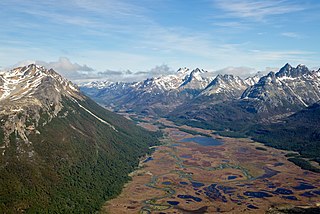
A mire, peatland, or quagmire is a wetland area dominated by living peat-forming plants. Mires arise because of incomplete decomposition of organic matter, usually litter from vegetation, due to water-logging and subsequent anoxia. All types of mires share the common characteristic of being saturated with water, at least seasonally with actively forming peat, while having their own ecosystem. Like coral reefs, mires are unusual landforms that derive mostly from biological rather than physical processes, and can take on characteristic shapes and surface patterning.

The conservation and restoration of shipwreck artifacts is the process of caring for cultural heritage that has been part of a shipwreck. Oftentimes these cultural artifacts have been underwater for a great length of time. Without conservation, most artifacts would perish and important historical data would be lost. In archaeological terms, it is usually the responsibility of an archaeologist and conservator to ensure that material recovered from a shipwreck is properly cared for. The conservation phase is often time-consuming and expensive, which is one of the most important considerations when planning and implementing any action involving the recovery of artifacts from a shipwreck.
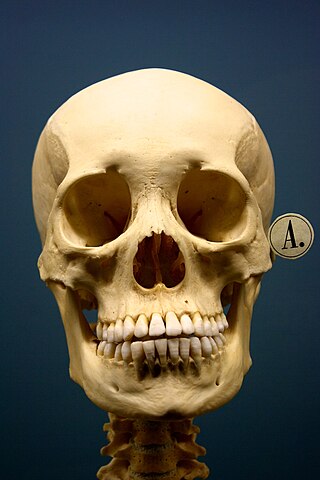
The conservation and restoration of human remains involves the long-term preservation and care of human remains in various forms which exist within museum collections. This category can include bones and soft tissues as well as ashes, hair, and teeth. Given the organic nature of the human body, special steps must be taken to halt the deterioration process and maintain the integrity of the remains in their current state. These types of museum artifacts have great merit as tools for education and scientific research, yet also have unique challenges from a cultural and ethical standpoint. Conservation of human remains within museum collections is most often undertaken by a conservator-restorer or archaeologist. Other specialists related to this area of conservation include osteologists and taxidermists.
The conservation and restoration of waterlogged wood is the process undertaken by conservator-restorers of caring for and maintaining waterlogged wooden artefacts to preserve their form, and the information they contain. It covers the processes that can be taken by conservators, archaeologists, and other museum professionals to conserve waterlogged wood. This practice includes understanding the composition and agents of deterioration of waterlogged wood, as well as the preventive conservation and interventive conservation measures that can be taken.















